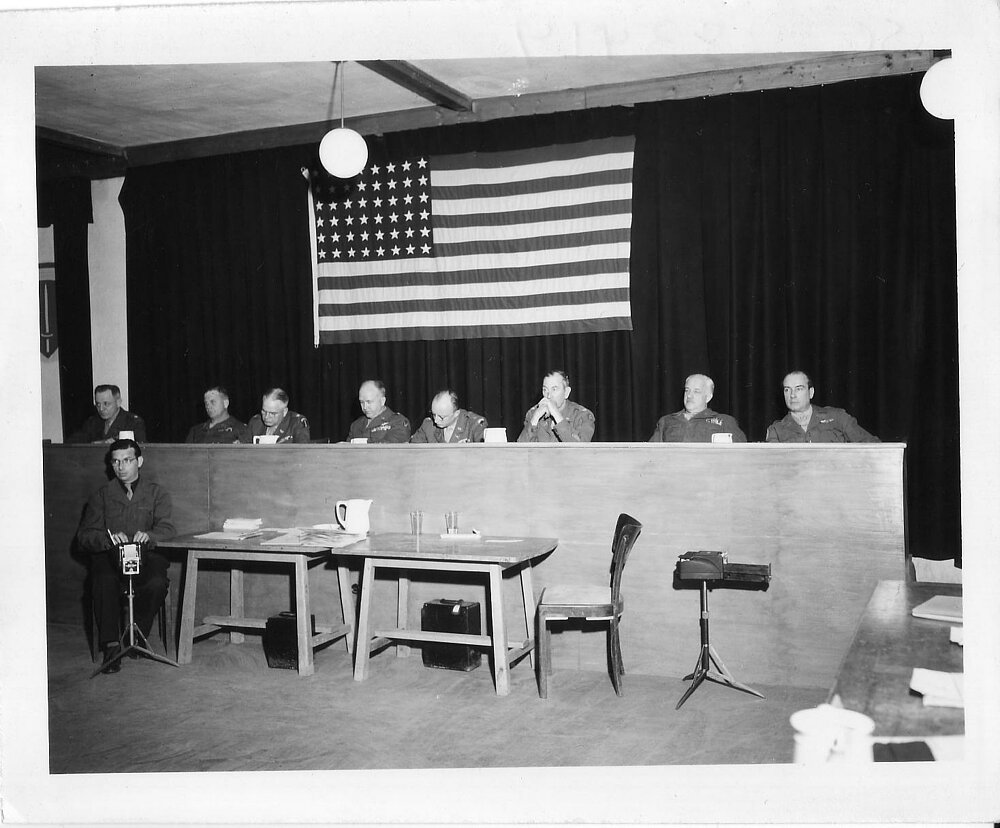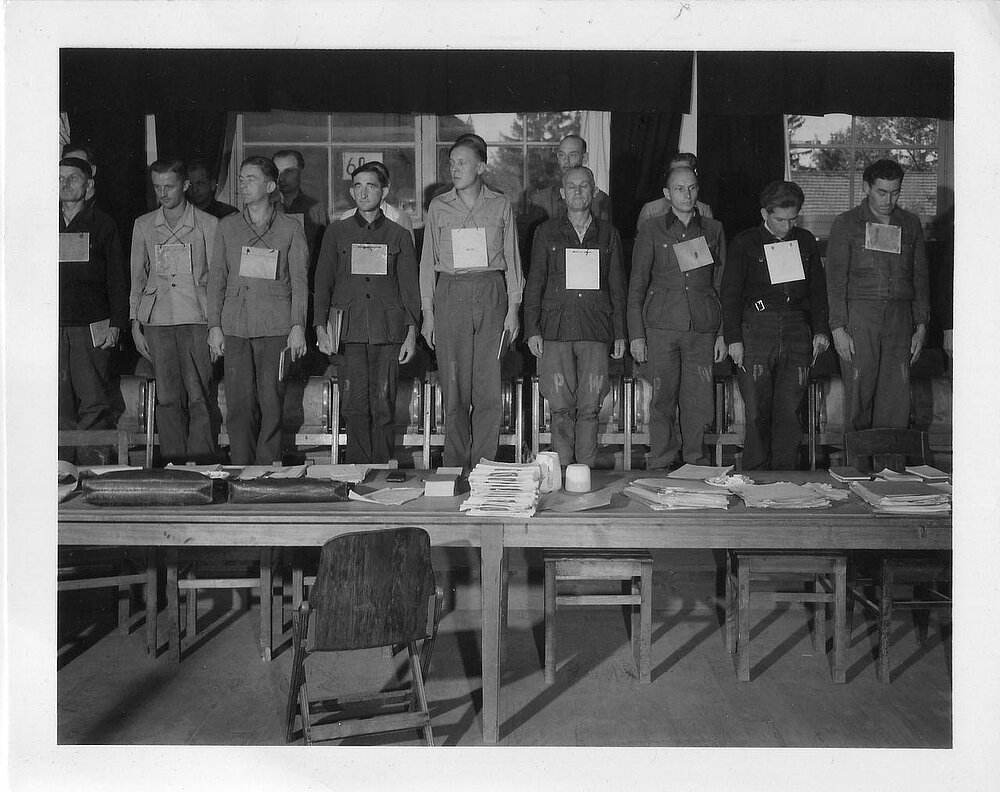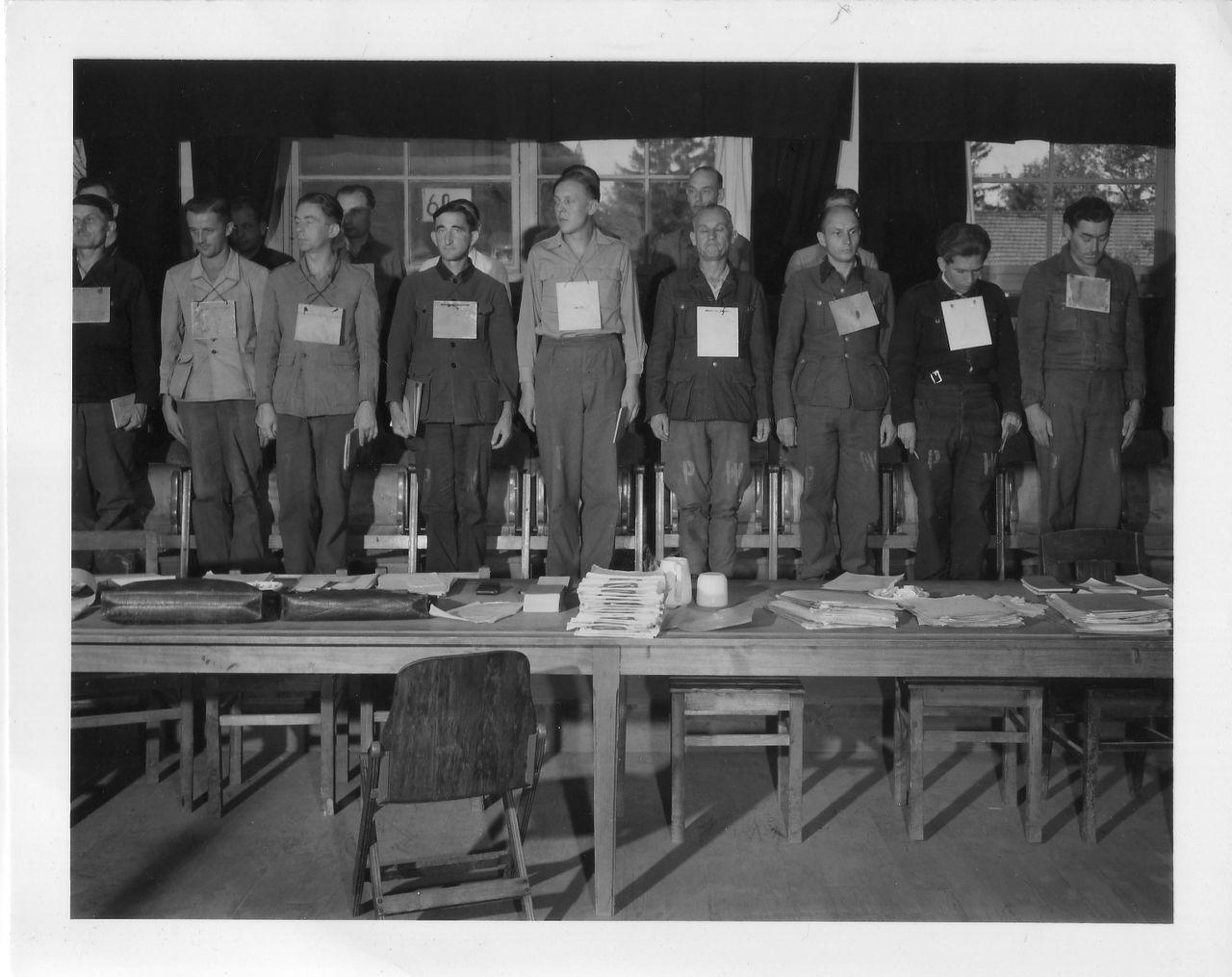#otd1945.06.15
Criminal Prosecution
On 15 June 1945, newspapers in Germany and abroad reported the arrest of Hermann Pister, the last commander of the Buchenwald concentration camp. American investigators had taken him into custody after tracking him down in a prisoner-of-war camp near Munich a few days earlier. Like many other SS men, he had tried to disappear among the masses of German POWs.

The American military tribunal sentenced him to death. He died in American custody before the death sentence was carried out.
Photo: U.S. Army Signal Corps (National Archives Washington)
Even before the war was over, the Allies had stated their intention to prosecute the German crimes and hold the perpetrators responsible. Immediately after the arrival of the U.S. troops, American agents accordingly set to work in the liberated Buchenwald and Mittelbau-Dora concentration camps as well as at crime scenes such as Gardelegen, Abtnaundorf and Nammering. They gathered evidence, heard witnesses, and drew up wanted lists.
By the end of 1945, the Americans had arrested several hundred persons whom they investigated for crimes committed in Buchenwald and Mittelbau-Dora. They committed these suspects to custody in the former Dachau concentration camp along with thousands of others. Dachau had come to serve as the main war criminals’ camp in the U.S.-occupied zone in the summer of 1945.

Photo: John Chambers (U.S. Army Signal Corps) (National Archives Washington)
In 1947, after two years of preparation, the largest trials on crimes committed in Buchenwald and Mittelbau-Dora took place before American military tribunals in Dachau. More than 80 persons were indicted, most of them former members of the SS, but also former inmate functionaries and a few civilians such as Ilse Koch, the wife of the first commander of Buchenwald, and Georg Rickhey, the former director general of the rocket factory in Kohnstein Mountain.
The trials in Dachau ended with 28 death sentences – of which less than half were carried out –, numerous prison sentences and a few acquittals. In the following years, however, nearly all of the prison sentences were reduced. By the end of the 1950s, not one of the persons sentenced in Dachau was still in custody. A large portion of the public had taken sides with the prisoners and demanded their release. Many of them resumed their ordinary civilian lives as if nothing had ever happened.
In the decades that followed, the crimes committed in Buchenwald and Mittelbau-Dora were tried before courts in both Germanys and abroad. Yet even if some of these trials were quite sensational, most of the judicial inquiries were ultimately dropped without results.
Of the thousands of SS men and women overseers who had served in Buchenwald, Mittelbau-Dora and their subcamps, only a small fraction were brought to trial. The persons who had participated in the countless crimes against concentration camp inmates in the weeks before the end of the war were likewise almost never prosecuted.
(Michael Löffelsender)
References:
Katrin Greiser, “Die Dachauer Buchenwald-Prozesse: Anspruch und Wirklichkeit – Anspruch und Wirkung”, in Ludwig Eiber and Robert Sigel (eds.), Dachauer Prozesse – NS-Verbrechen vor amerikanischen Militärgerichten in Dachau 1945-48: Verfahren, Ergebnisse, Nachwirkungen, Göttingen 2007, pp. 160–73.
Michael Löffelsender, “‘A particularly unique role among concentration camps’: Der Dachauer Dora-Prozess 1947”, in Helmut Kramer, Karsten Uhl and Jens-Christian Wagner (eds.), Zwangsarbeit im Nationalsozialismus und die Rolle der Justiz: Täterschaft, Nachkriegsprozesse und die Auseinandersetzung um Entschädigungsleistungen, Nordhausen 2007, pp. 152–68.


